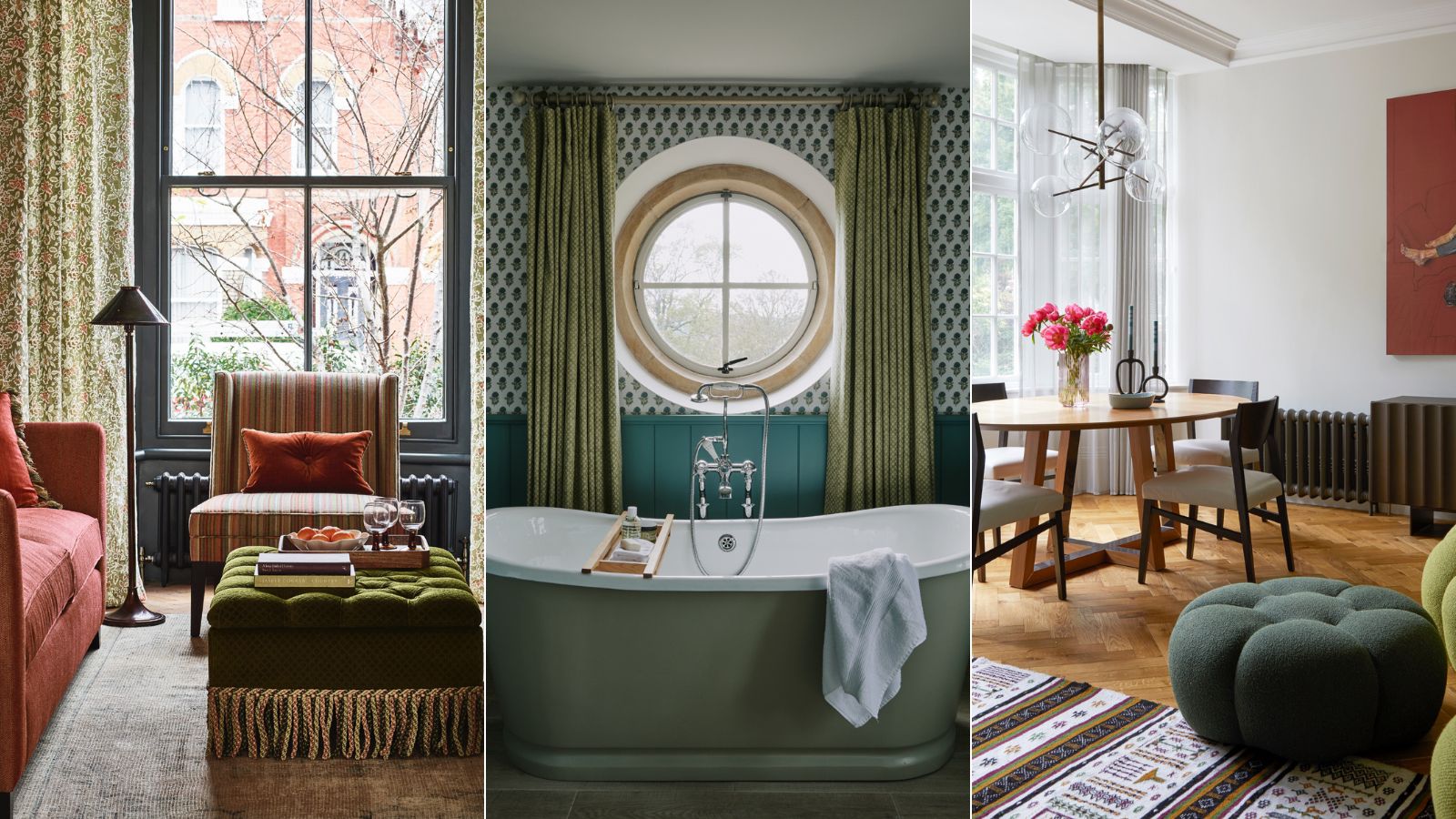
One of the most commonly asked questions in interior design is which work best – drapes or curtains? The answer is both can work equally as well but it does depend on the space and what you're after with your window treatment ideas.
'We love that drapes showcase the beauty and craftsmanship of a fabric by how they drape, and good-quality designs with an interesting pattern can really elevate a scheme,' says Tim Walter, managing director of George Spencer Designs.
Whereas Caroline Milns, head of design at Zulufish likes blinds for certain spaces, 'Providing a sleek and crisp feel, blinds are the perfect option for a more contemporary and modern feel within a home.'
With the help of interior design experts we consider drapes vs blinds and look at the pros and cons of both (and have a look at using the two together) so you can decide which option suits your home best.
Why choose drapes?
Full drapes with pattern can be a key design feature
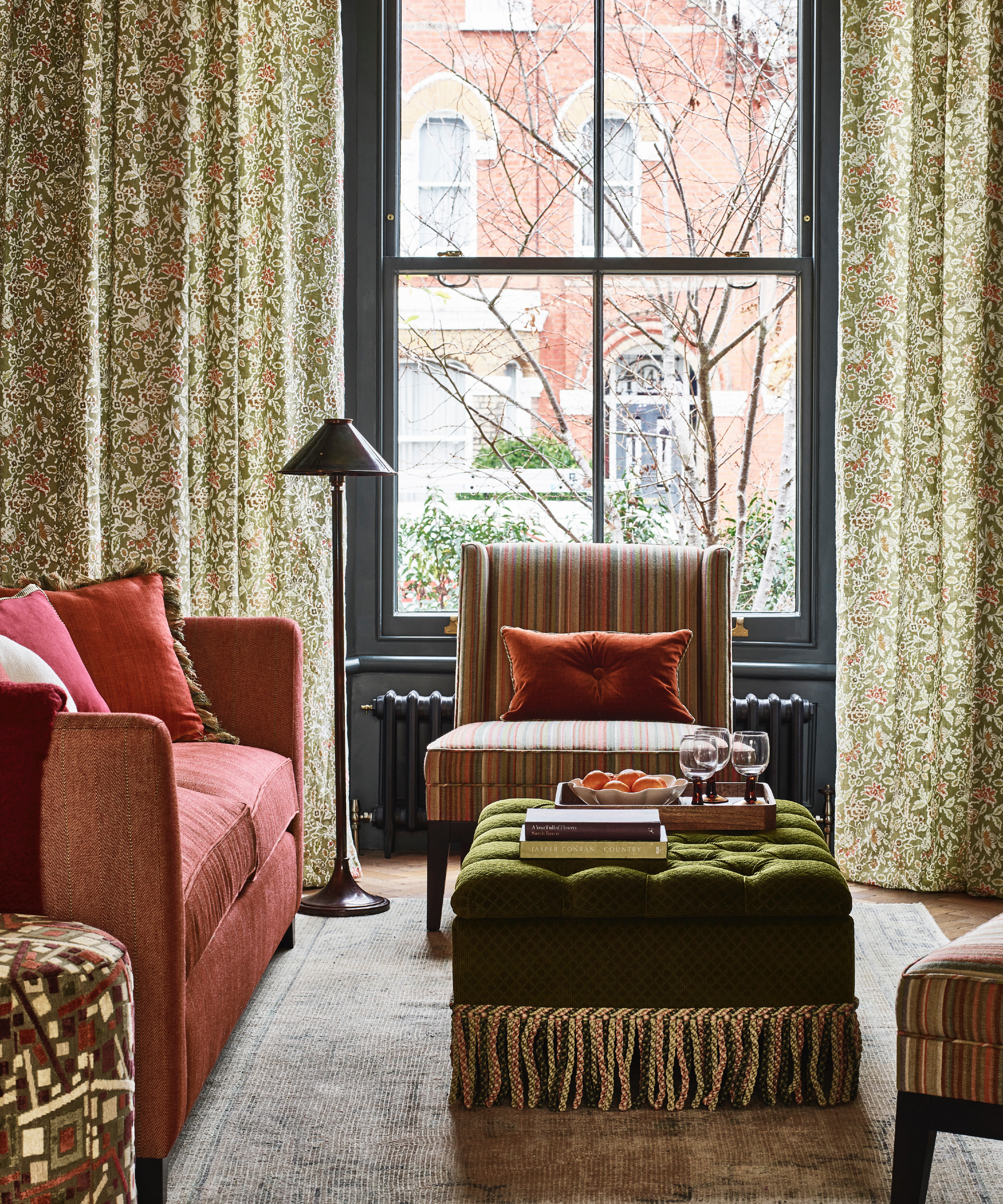
Drapes can be an integral part of your space if you want them to be, or, they can be plain and a secondary element that's more practical than stand out. In this texture and pattern filled maximalist living room they are a focal point that brings the whole scheme together and enhances the beautiful window too.
'Choosing a lively pattern for your drapes, such as a fun floral or bold stripe, is a great way to bring personality to a room. Selecting drapes in a complimentary, but different, color to your furniture perfectly ties a scheme together and adds depth and interest,' says Tim Walter, managing director, George Spencer Designs.
They can be light and airy
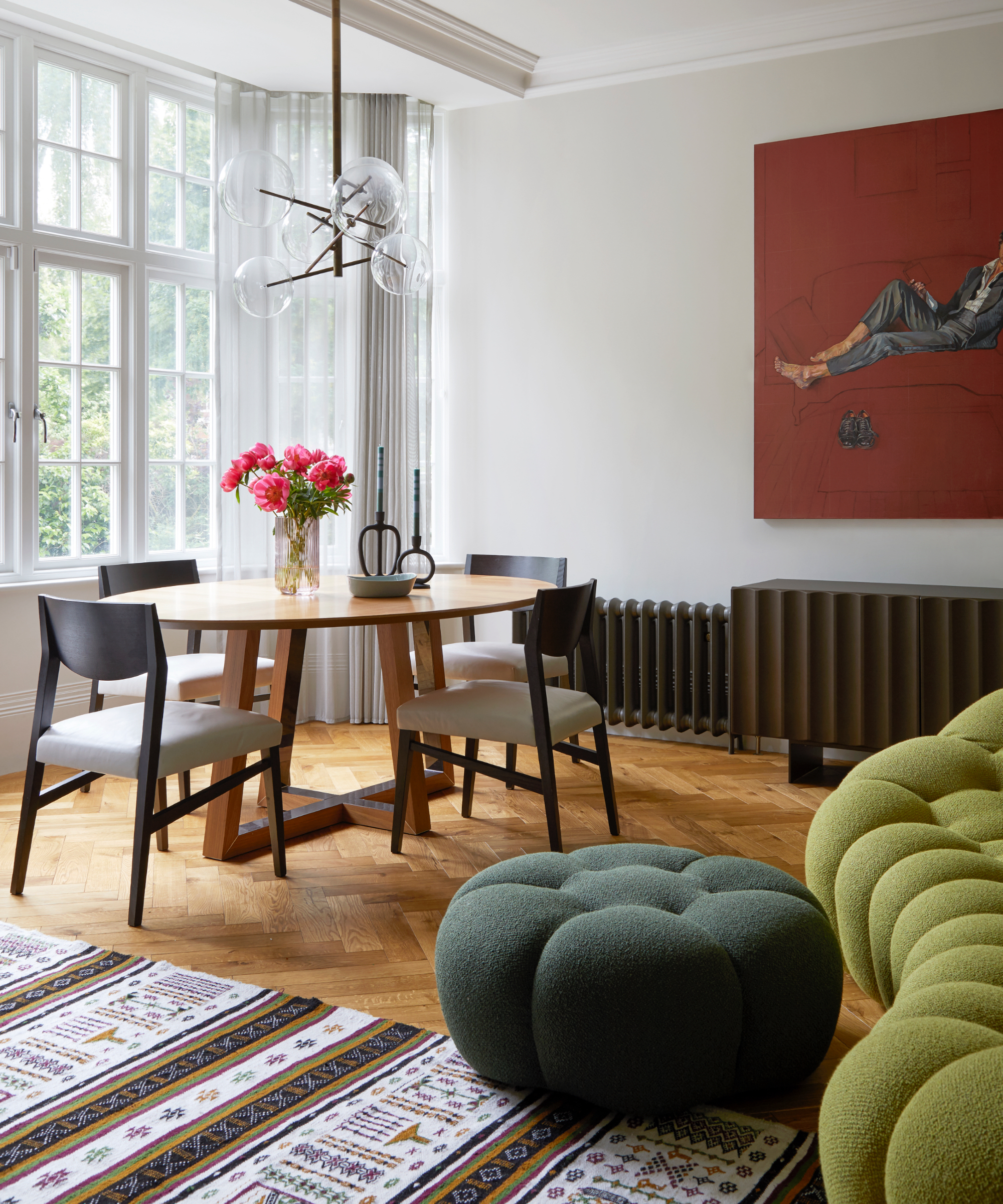
If you want your drapes to enhance rather than be eye-catching then choose a neutral color in a fabric that suits your needs – in the summer a lightweight cotton or voile is ideal, and in the winter a midweight linen or velvet will do the trick.
Caroline Milns, head of design at Zulufish says it's important to be cohesive, 'Drapes can be inspired by the color palette of the room – pick out a specific color that may be woven throughout the interior, but also look to bring different patterns and textures into play to create a layered effect within the room by adding weight and drama. From a practical perspective, drapes also diffuse sound a lot more than blinds.'
Cafe drapes add charm in a kitchen
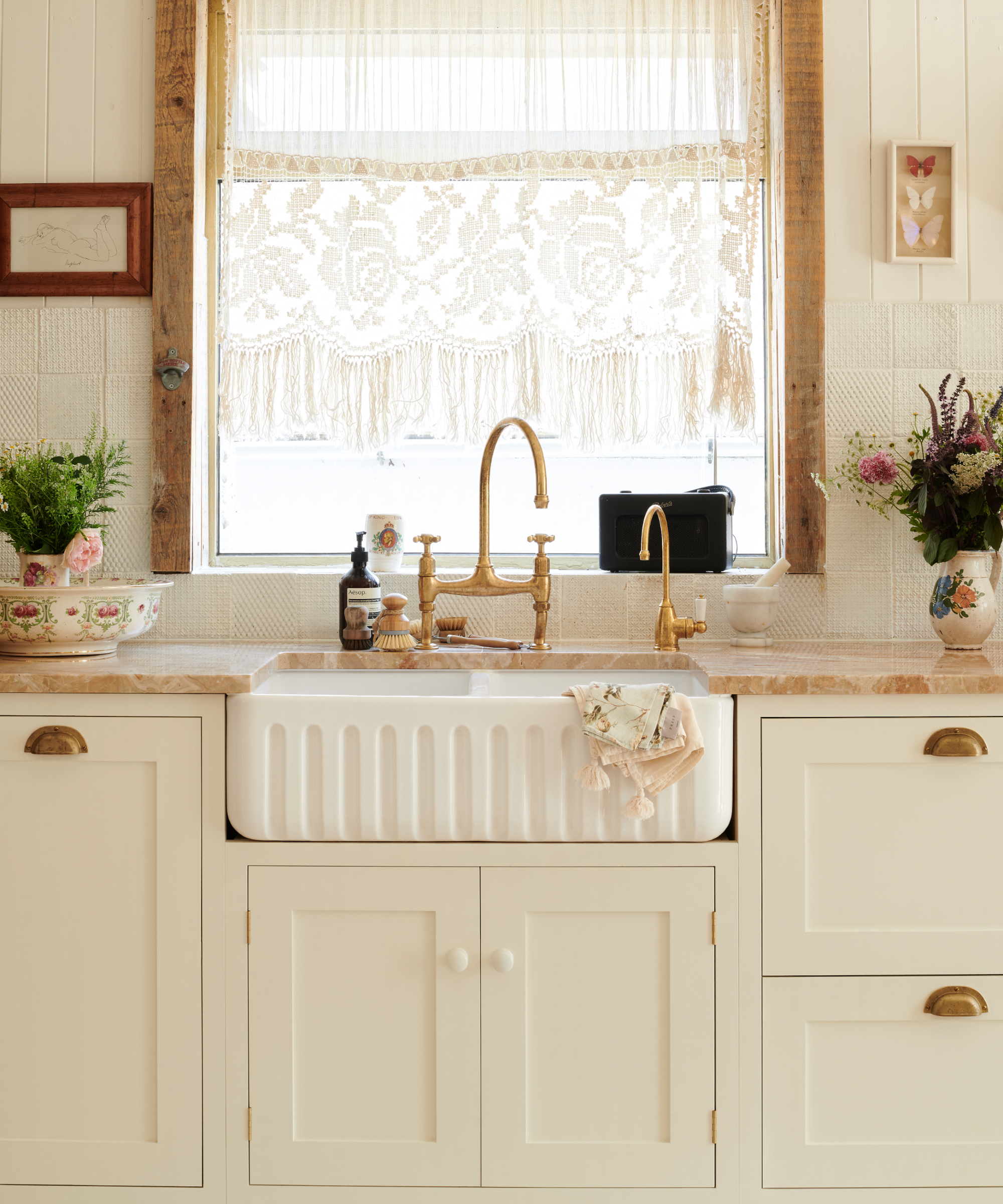
So how do you use drapes in a kitchen? We love this option adopted by Pearl Lowe in her charming vintage kitchen.
Helen Parker, creative director at deVOL Kitchens says a cafe curtain is the prettiest option – we agree! 'It is actually a very useful and authentic method of sectioning off a room, hiding a view or creating privacy. Find a window, find a delicate piece of sheer wispy fabric, and attach one of our brass rails to create a vignette of beauty.'
Lace is an ideal choice if you love the cafecore trend, it offers a touch of privacy and allows the light to come through making it a good choice for a kitchen that needs brightening up.
Drapes can be used in a bathroom
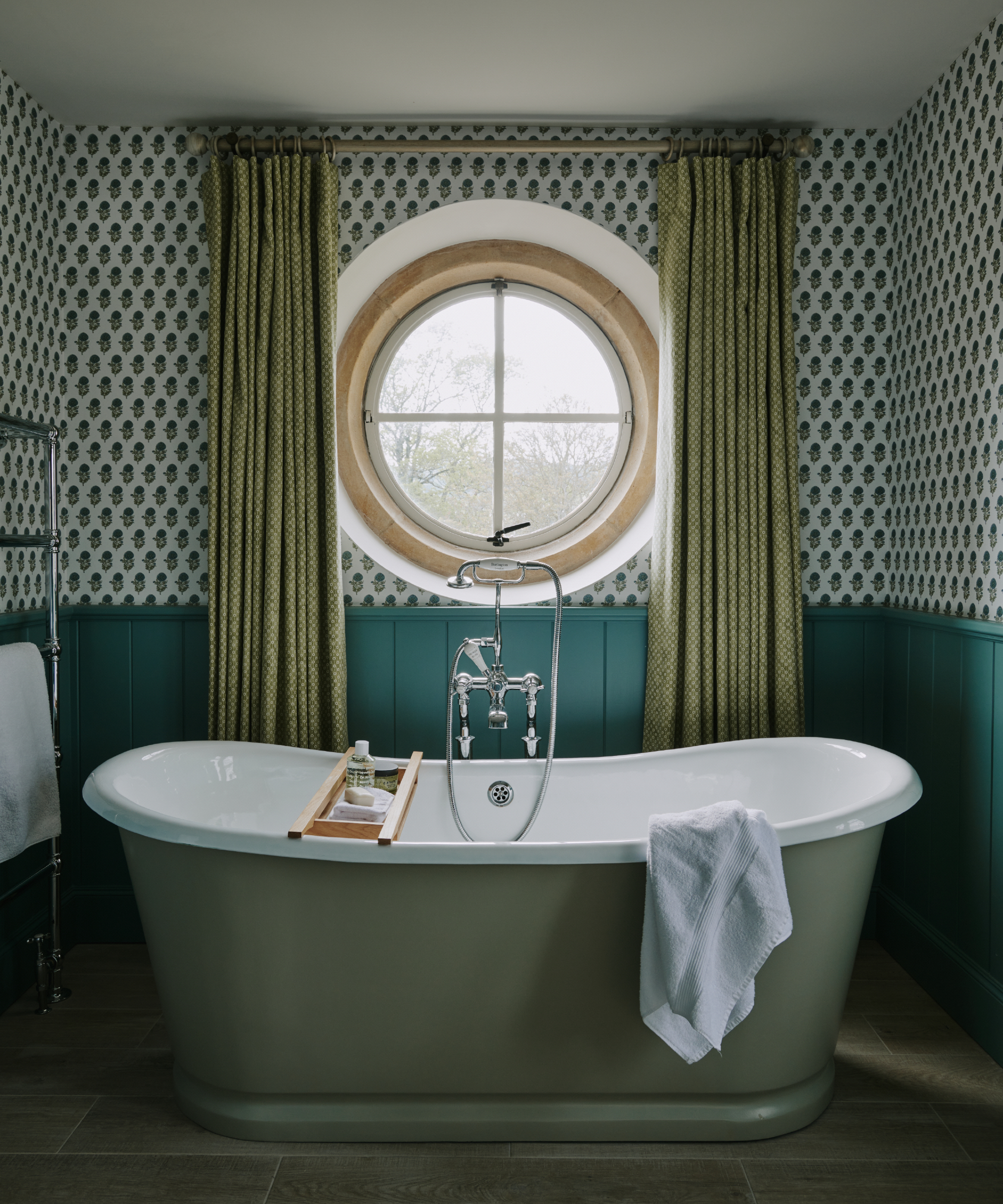
Drapes and bathrooms aren't necessarily something you may think go hand in hand – however, get it right and they will look fabulous and elegant.
Sometimes, a bathroom window in a space might not be suitable for a blind, and the only option might be drapes. We also love the use of symmetry and you get that more with drapes due to the length than with a blind in this instance.
Chloe Cutts, designer at Sims Hilditch explains, 'Drapes have numerous advantages. They serve as a great foundation for any design scheme and offer ample opportunities for customization, from fabric and pelmets to tassels and trims. With an endless array of fabrics, patterns, and styles, they are incredibly versatile and can complement almost any interior which ultimately allows for a more bespoke finish to a space.'
Elongate a ceiling with floor length drapes
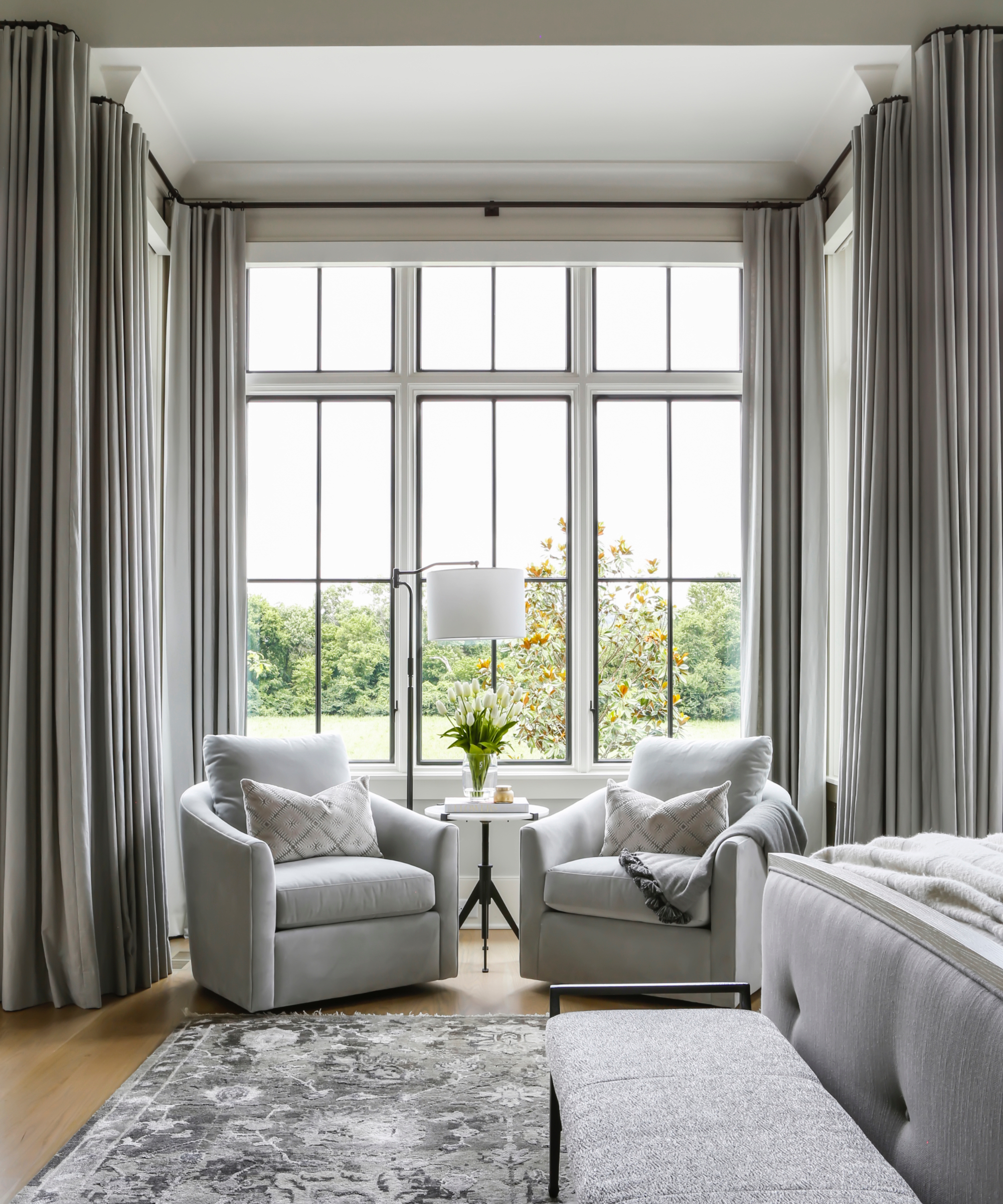
As well as being practical and decorative, drapes are also great for tricking the eye when it comes to low ceilings.
Hang the rail as close to the ceiling as you can and ensure the drapes either touch the floor or slightly 'puddle'. The length will draw the eye up and make the room feel more spacious.
In this elegant bedroom, blinds wouldn't have the same effect, Brad Ramsey, principal and founder of Brad Ramsey Interiors says, 'In general, I think the most popular way to treat a window for both aesthetics and function is with drapery. There are lots of ways to layer a window, but nothing brings as much softness and individuality to a space as drapery does.'
Hang both winter and summer drapes
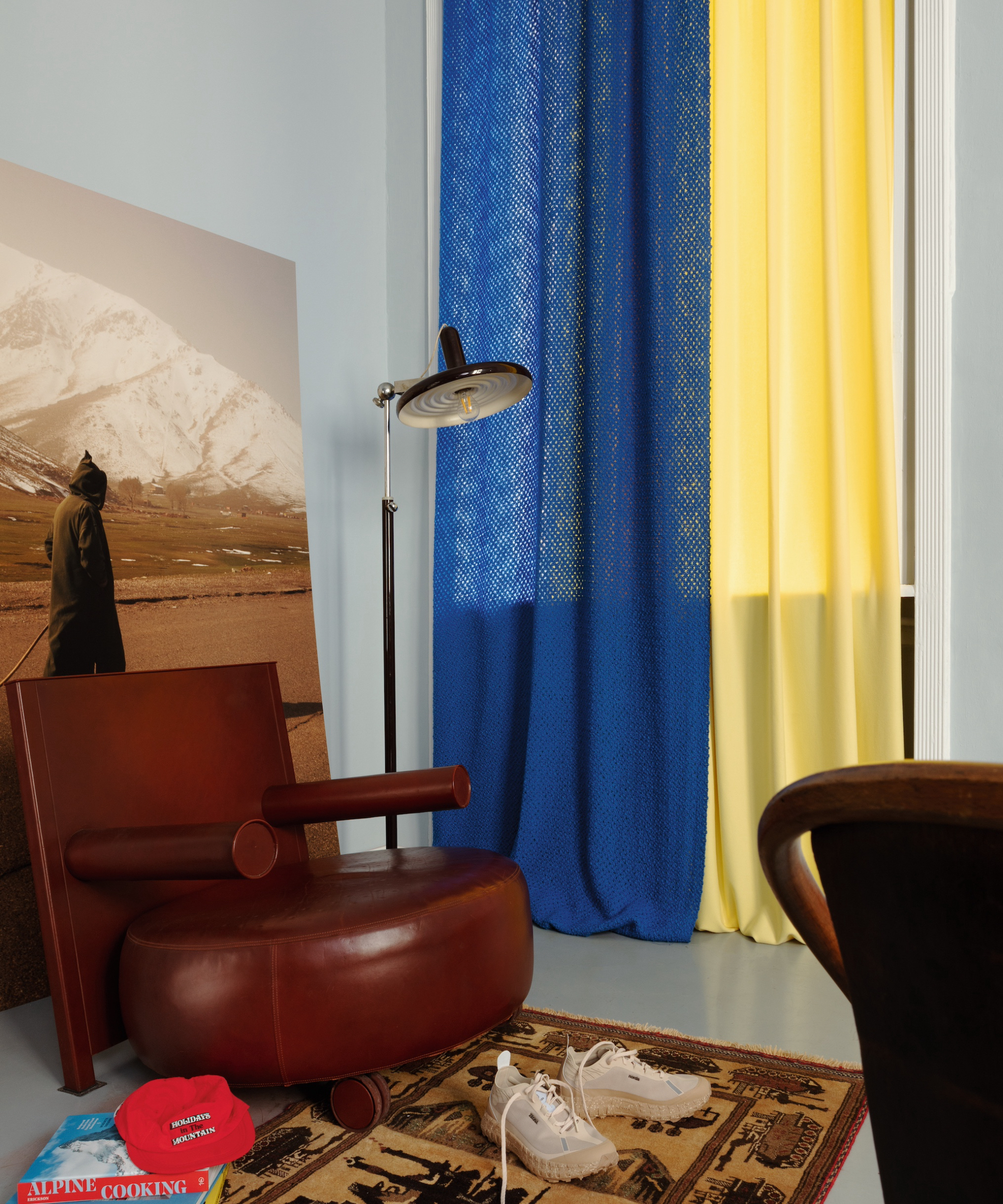
Drapes offer options in that you can hang both a heavyweight and thinner pair together, not only will they create interest, but also can be practical.
Ramdane Touhami, designer of The Drei Berge Collection for Fischbacher 1819, explains, 'Me, I hate to change drapes. I don’t like it, so I had the idea to have this winter-y thing, you push it to the side, and you have the summer one. This is the concept. I don’t know if it’s going to work, no one’s done it like that, but the idea is to have the winter and the summer on top of each other. And it’s beautiful. In the winter, you want cover, but you still want to have the light because there’s not so much light. In the summer, you really want dark. It’s the idea of playing with the light.'
You can also hang two different colors together which is a great idea for a modern living room.
Why choose blinds?
They take up less space
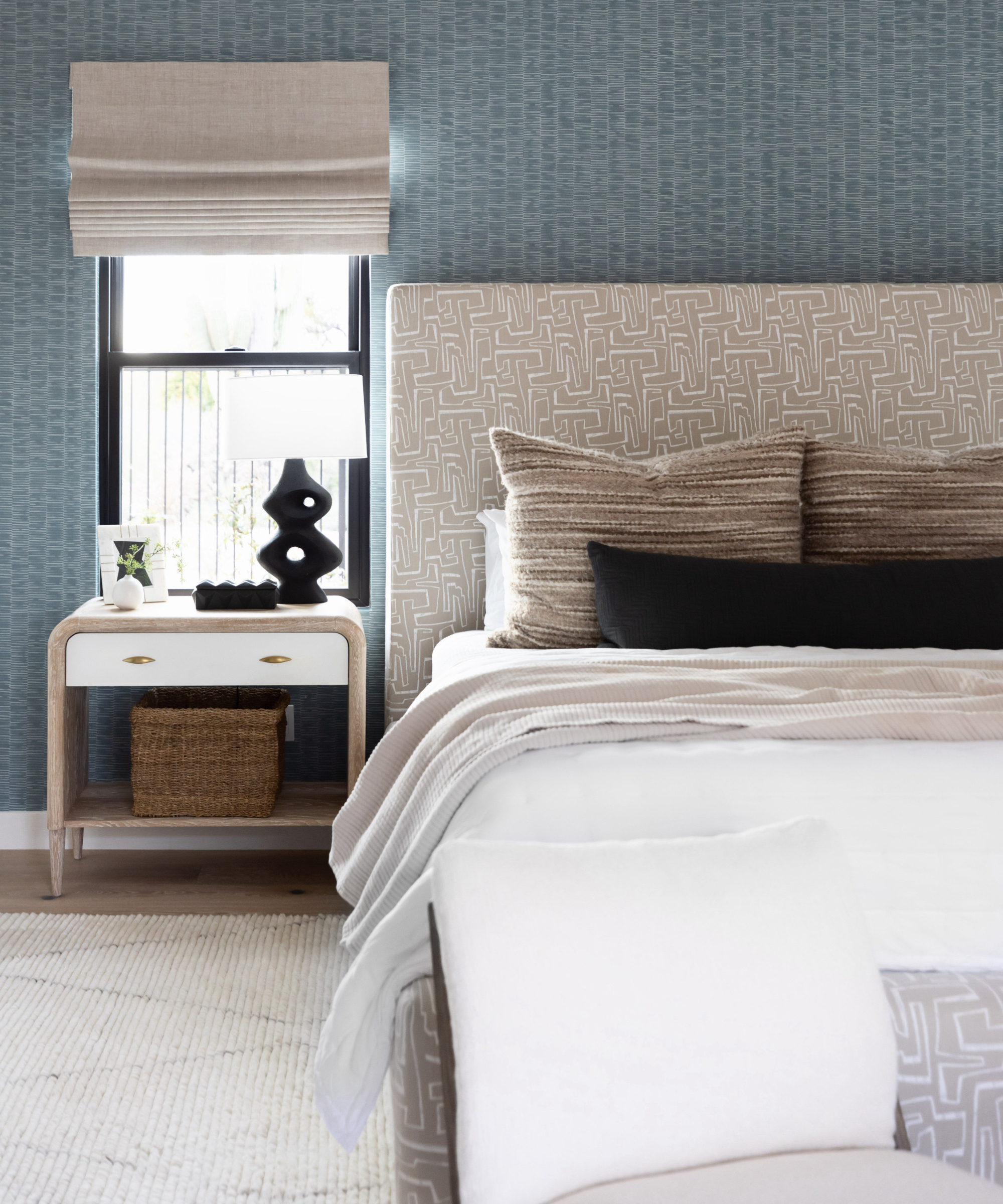
More economical in terms of fabric usage – only one width instead of two per window – blinds definitely offer a different aesthetic when used alone. There's no touching the floor and the way they can be pulled up when not in use gives them a cleaner more minimalist look.
'Drapery panels are still amongst the most popular window coverings, although Roman shades are also a great alternative,' says Lauren Lerner, CEO and founder of Living with Lolo.
'Window covering styles can often depend on the location. For example, we like adding Roman shades to master bathrooms as opposed to drapery panels so they are not sitting near the floor where water can reach them.'
Blinds can be discreet
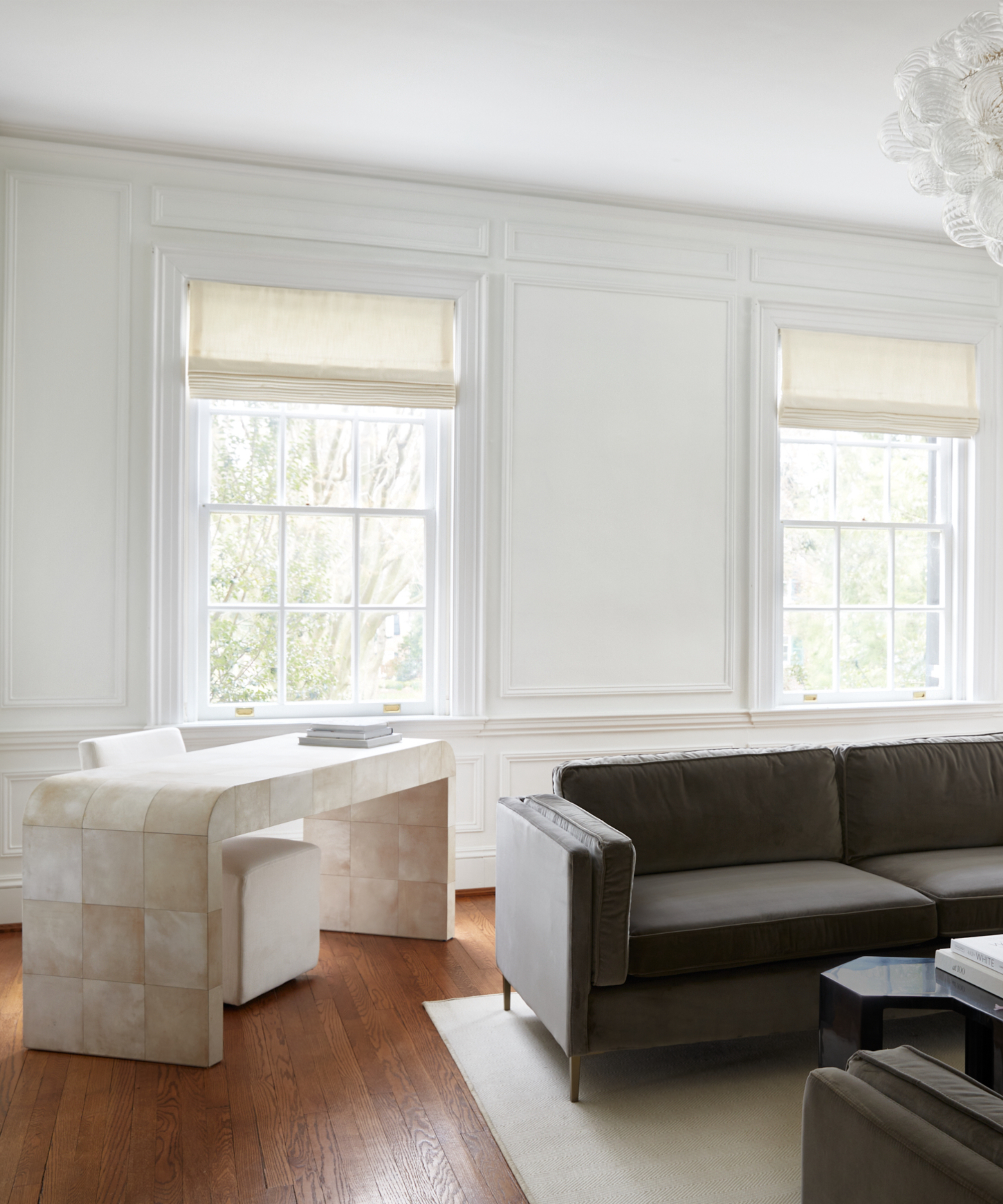
When you want your window treatments to take a back seat there's nothing more discreet than a blind as it will fit neatly with the frame.
A neutral color will make the blind recede visually too – in this minimalist living room, the blinds add a hint of warmth to the scheme. Note your eye doesn't get drawn down like it would if there were drapes. They allow light to flood into the space but offer some privacy.
Use both drapes and blinds in one space
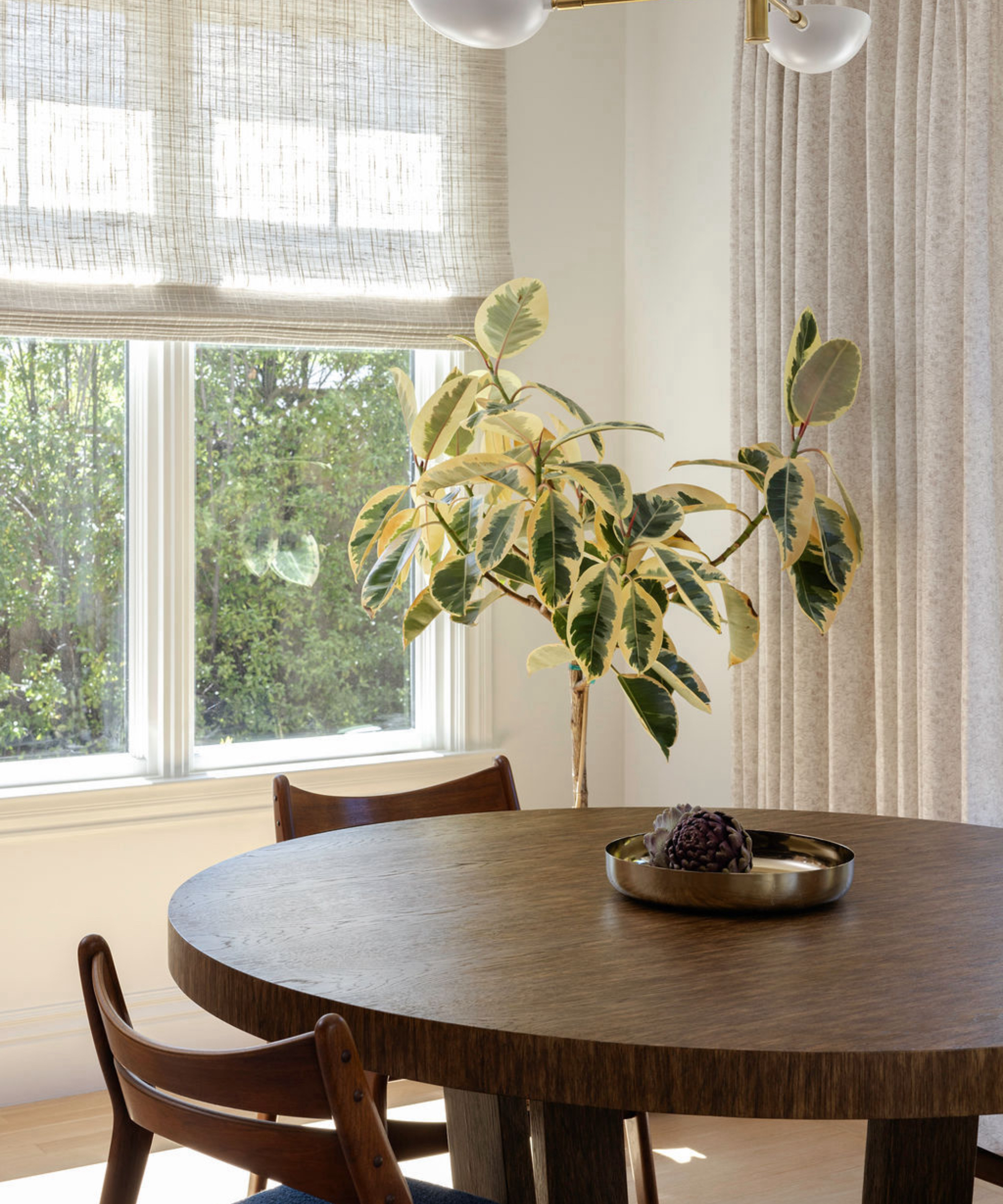
The versatility of both blinds and drapes means they can be used separately, but together in the same space.
It works well when some windows are smaller than others, or if you want to add curtains to a door that leads out to the backyard.
And you don't need to match up the fabric types says Megan Warren, founder and principal designer at Megan Warren Design, 'We used Roman shades and drapes for the breakfast room. Even though the materials were completely different because the colors coordinated it worked really well. The drapes are a Kravet Fabric with a small neutral pattern and the Roman shades are a natural woven material from Hartmann & Forbes.'
Or use them together
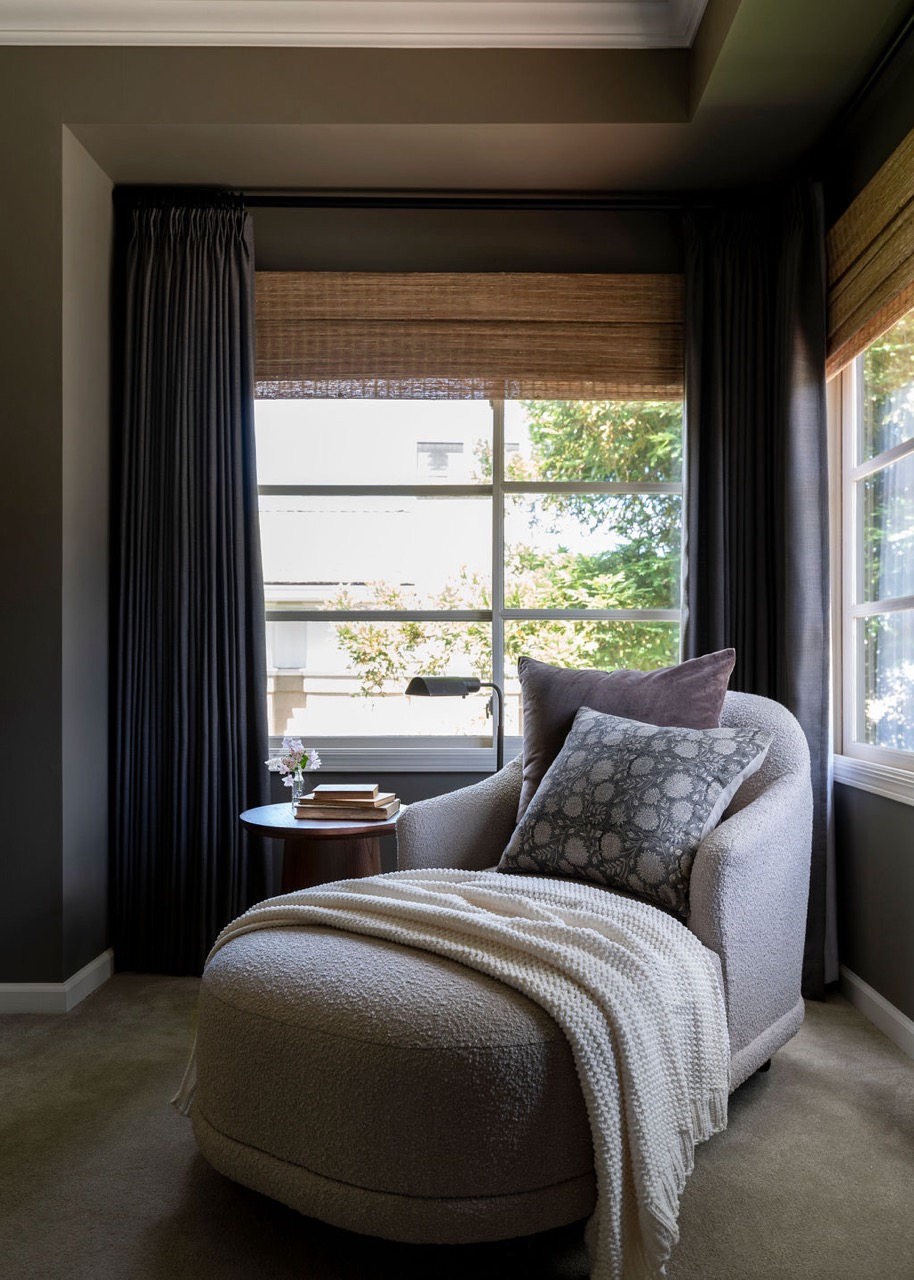
Perhaps one of the most popular window treatment trends is to combine both blinds and drapes together. It certainly gives you the best of both worlds.
'I love to work drapes into a bedroom, living room or family room. Drapes add so much to a space. Functionally they provide privacy and insulation. Visually they add a layer of texture and verticality that makes any room feel so much more elevated and finished. My go-to is to layer drapes over blinds or shades to allow for different needs in terms of privacy and light filtering,' says Sandy Yen, founder of Yen Collective.
What's great about using both is that you can really play with texture and pattern – we love the rattan blind here, it adds a tactile quality to this cozy space.
Both drapes and blinds have their merits and can be as striking as each other. They can be colorful, muted, tactile, and elegant and if you can't decide which to choose – why not use both together?







